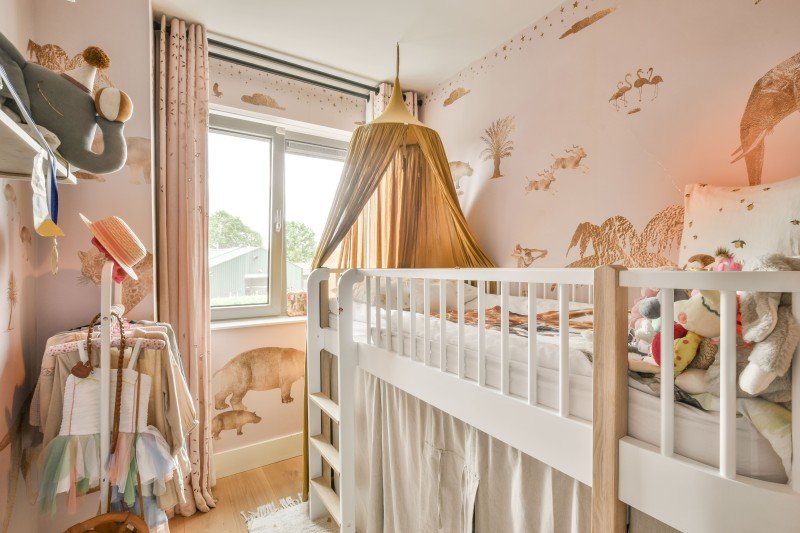15 Up-And-Coming Bunk Beds Bloggers You Need To Keep An Eye On

Exploring Bunk Beds: A Comprehensive Guide
Bunk beds have long been a staple in kids's bed rooms, dorms, and even homes with minimal space. Not just do they supply a useful sleeping option, however they likewise develop an enjoyable and creative environment for kids and a great space-saver for adults and households. This post will check out everything you require to learn about bunk beds, from types and products to safety pointers and buying recommendations.
Table of Contents
- Types of Bunk Beds
- Traditional Bunk Beds
- Loft Beds
- Triple Bunk Beds
- L-Shaped Bunk Beds
- Product Options
- Wood
- Metal
- Security Considerations
- Buying Guide
- Frequently asked questions
Types of Bunk Beds
Bunk beds can be found in different styles to match various needs and choices. Here's a breakdown of the most typical types:
Conventional Bunk Beds
Conventional bunks generally include two beds stacked vertically on top of one another. These beds are ideal for siblings sharing a space or for taking full advantage of sleeping space in guest spaces.
Loft Beds
Loft beds stand likewise to conventional bunk beds however do not have a lower sleeping location. Rather, UK Bunk Beds incorporate a desk or seating location underneath, making them a great choice for small rooms requiring multifunctionality.
Triple Bunk Beds
Triple bunk beds are created for three occupants, with beds stacked in a three-tier setup. These are less common but can be an enjoyable service for big households or sleepovers.
L-Shaped Bunk Beds
With one bed positioned horizontally and the other vertically, L-shaped bunk beds are typically equipped with extra features such as desks or storage drawers and can complement corner areas in a space.
Contrast of Bunk Bed Types
| Bed Type | Ideal Use | Description |
|---|---|---|
| Traditional | Shared bed rooms or guest rooms | 2 beds stacked vertically |
| Loft | Small spaces needing multi-purpose space | Upper bed with open space beneath |
| Triple | Big households or slumber parties | 3 beds stacked vertically |
| L-Shaped | Corner or flexible spaces | A mix of vertical and horizontal beds |
Material Options
Bunk beds are manufactured from different products, with wood and metal being the most typical. Each material has its advantages and disadvantages.
Wood
- Resilience: Generally robust and can endure years of use.
- Visual Appeal: Offers a classic look that can blend with different designs.
- Weight Capacity: Typically tougher; can support much heavier weights.
- Drawbacks: May be more pricey than metal alternatives and can be vulnerable to scratches.
Metal
- Strength: Generally light-weight and easy to move however still strong.
- Modern Design: Often is available in streamlined designs, making it appealing for modern areas.
- Cost-efficient: Usually more economical than wooden choices.
- Downsides: Can be cold to the touch in winters and might not have the very same aesthetic appeal for some buyers.
Safety Considerations
When it pertains to bunk beds, security can not be overlooked. Here are crucial security tips to bear in mind:
- Guardrails: Ensure that the leading bunk has guardrails on both sides to avoid falls.
- Strong Construction: Check for a solid develop and tough materials to endure weight and motion.
- Weight Limit: Adhere to the manufacturer's weight limitation for both the upper and lower bunks.
- Ladder Design: Choose bunks with a safe, easy-to-climb ladder and prevent any sharp edges or rungs.
- Age Restrictions: Most producers suggest that children under the age of 6 need to not sleep in the upper bunk.
Buying Guide
When shopping for bunk beds, think about the following elements to find the best fit for your needs:
- Space Availability: Measure the space size and ceiling height, ensuring there is adequate space for the leading bunk.
- Bed Size: Decide in between twin, complete, or bigger sizes based on your needs and the size of the room.
- Design Preference: Consider the total design of the bed room to find an appropriate style.
- Ease of Setup: Look for a bunk bed that is uncomplicated to assemble.
- Spending plan: Bunk beds are available in numerous rate ranges, so identify a spending plan before starting your search.
Frequently asked questions
1. What is the suggested age for children to sleep on the leading bunk?
Kids aged six and older are normally suggested to sleep on the top bunk to decrease the danger of falls.
2. How can I make my bunk bed safer?
To boost safety, make sure guardrails are effectively set up and examine that the bed is put on a flat surface area. Furthermore, encourage children to use the ladder carefully.
3. Can I transform a bunk bed into two different beds?
Many bunk beds are developed to be convertible. Check the producer's specs for convertibility features.
4. What devices are available for bunk beds?
Typical devices include beddings, storage drawers, staircases instead of ladders, and tented canopies for an enjoyable visual appeal.
5. How do I maintain my bunk bed?
Routine look for loose screws or structural integrity can help guarantee safety. Dust the bed regularly and tidy spills immediately to keep the products in good condition.
Bunk beds are versatile and a space-efficient option for various living situations, from kids's spaces to guest accommodations. With lots of styles and products available, possible purchasers have a wealth of options to consider, guaranteeing a mix of usefulness and aesthetic appeals. By prioritizing security and following the suggestions outlined in this guide, people can find the right bunk bed that suits their space and lifestyle, all while creating a satisfying sleeping environment.

